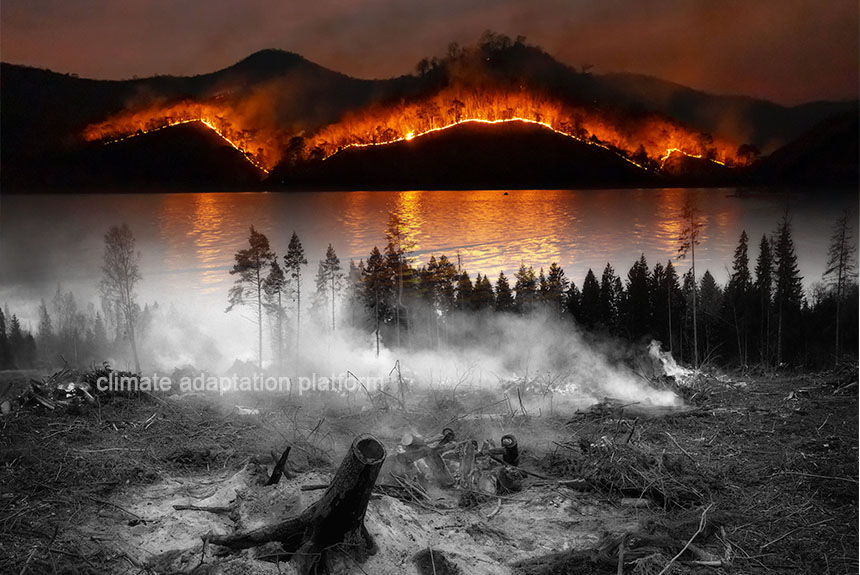The summer season in the Northern Hemisphere has seen some extreme events, including record-breaking wildfires in Canada, large fires across Eastern Russia, and, in Northern Greece, the EU’s largest ever recorded wildfire.
Wildfires in the Northern Hemisphere usually coincide with the hottest and driest months of the year, which run from May to October and peak in July and August.
According to Copernicus, this year’s September wildfires in Canada burned over 4 million hectares and released huge amounts of carbon dioxide into the atmosphere.
Copernicus, the European Union’s Earth observation programme, says that the August emissions alone were the highest in a 20-year average, dumping over 105 megatonnes of CO2 into the atmosphere.
While the summer brought catastrophic fires in the Northern Hemisphere, down south, Australia has recorded its warmest winter fuelled by the record ocean temperatures. In September, Australia’s weather bureau confirmed that the El Niño weather pattern is underway and threatens hot and dry fire weather.
The Conversation reports that fires started in New South Wales, Queensland, and the Northern Territory as early as the start of spring. The article says that fires in early spring have been consistent with seasonal predictions. But what worries Australians is what summer will bring. People living in the bush, country towns, or the outskirts of major cities need to prepare for the possibility of fire, and the rest of Australians need to prepare for the heat.
The article proposes how individuals could prepare for the upcoming fire season. First, to know how to get out of the area in case of bushfires, including practising your evacuation and making a plan to ensure you can keep in touch with your loved ones. Second, ensure you have the equipment and resources to cope with the heat, such as using air conditioners and insulating your home. Preparation and understanding the risks are crucial, as well as ditching the “she’ll be right” attitude as climate change increases bushfire and heat threats.
Learn more about Australia’s bushfire weather from the Bureau of Meteorology.
The Harvard Gazette reports that wildfires present a dual problem – they are getting bigger and hotter as a symptom of climate change, and they are making the climate crisis worse by sending more GHG into the atmosphere as they burn down decomposed matter.
A Harvard wildfire expert, Loretta Mickley, predicts that wildfires will only increase in boreal regions like Siberia, northern Canada, and Alaska. These regions are warming much faster than global averages, drying the area and increasing fire activity.
According to Mickley, while human activity can ignite fires, human-made changes to the landscape, like roads, cities, and croplands, can decrease wildfires because there is less fuel. Another example of human intervention that has successfully reduced the risks of significant wildfires in Australia is the Indigenous practice of controlled burning early in the fire season, which has been used to minimise big fires later in the season when fires have become more challenging to manage. In Northern Australia, where it has been applied, the area burnt has decreased by about 30% since 2003.
Southwest FireCLIME, a multi-year research partnership between scientists and resource managers synthesising current knowledge of regional climate-fire-ecosystem dynamics, has developed climate adaptation tools and resources for managing fire and forests in a changing climate.
‘Sources:
Australia now in El Nino climate pattern, increasing risk of severe wildfires and droughts. (2023, September 19). France24. Retrieved from https://www.france24.com/en/asia-pacific/20230919-australia-braces-for-summer-of-severe-wildfires-droughts-as-el-nino-begins
Powell, A. (2023, August 23). Wildfires are much worse than a sign of climate change. The Harvard Gazette. Retrieved from https://news.harvard.edu/gazette/story/2023/08/wildfires-are-much-worse-than-a-sign-of-climate-change-says-expert/
Northern Hemisphere wildfires: A summer of extremes. (2023 September 13). Retrieved from https://atmosphere.copernicus.eu/northern-hemisphere-wildfires-summer-extremes
Young, C., Izadyar, N., & Jones, R. (2023, September 18). Worried about heat and fire this summer? Here’s how to prepare. The Conversation. Retrieved from https://theconversation.com/worried-about-heat-and-fire-this-summer-heres-how-to-prepare-212443
Adaptation Tools. (n.d.). Southwest FireCLIME. Retrieved from https://swfireclime.org/fire-climate-adaptation-tools/
Wallen, S., & Knight, Mia (2023, September 18). Dangerous bushfire conditions continue across Queensland this week with seven districts facing high fire danger. ABC News. https://www.abc.net.au/news/2023-09-18/qld-bushfire-threat-set-to-remain-this-week/102867180
Northern Territory bushfire: Tennant Creek under threat as emergency situation declared for Barkly region (2023, September 12). Australian Associated Press. Retrieved from https://www.theguardian.com/australia-news/2023/sep/12/northern-territory-bushfire-tennant-creek-barkly-region



Leave a Reply